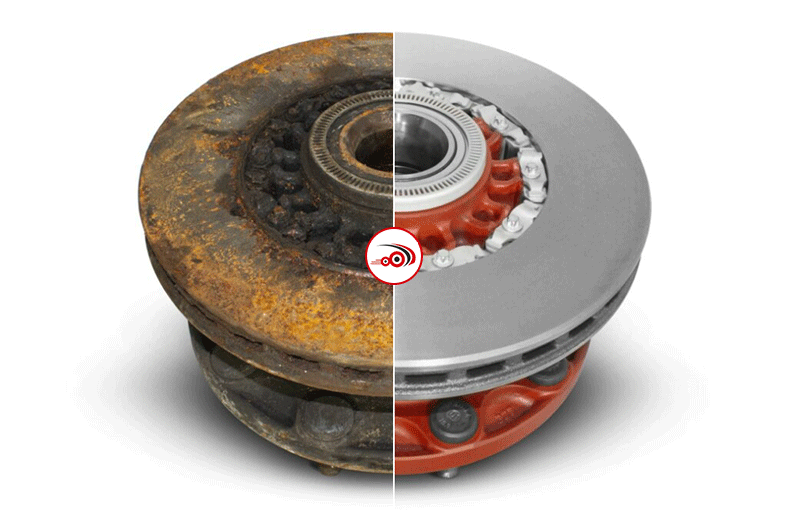
Wheel hub assemblies are some of the toughest and hardest working components of your vehicle. On an HGV they’re asked to cope with considerable weight and workload on a daily basis so they’re built to last. While they will give you thousands of miles of trouble-free service, as with everything, they will be subject to deterioration over time.
Eventually, a wheel hub assembly will begin to show signs of deterioration which, if left to continue, will only get worse. While outright failure is rare, it’s important to be alert to some of the warning signs. The timeframe in which damage can occur is generally linked to driving conditions with noise being a classic sign of a faulty wheel hub bearing.
Some of the first signs that a wheel hub assembly is failing will be noises. This is why it’s important to remain attuned to any unusual and persistent noises and to act on them. It could save you money and hassle in the long run.
Noises indicating a failing wheel hub assembly
Grinding when the vehicle is in motion
If you hear grinding noises when the vehicle is in motion it can indicate that a wheel hub assembly is damaged. If the noise is normally heard when turning or when there is a shift in load, it might indicate roller or raceway damage.
Rumbling or growling noise
A rumbling or growling noise can be indicative of a bad bearing. It can be particularly prominent when the vehicle is moving in a straight line, getting worse when the vehicle turns slightly at a speed of 15-50mph.
Physical signs of wheel hub assembly failure
Wheel vibration and/or wobble
Wheel vibration or wobble is usually indicative of a worn or damaged tyre, wheel or suspension component or severe chassis misalignment. It can also occur when lug nuts are not properly torqued or may indicate the loss of clamp. It can indicate a bearing with extreme mechanical damage.
Loose steering wheel
If you feel some looseness in the steering it may indicate that a wheel bearing is failing. When a bearing wears down it starts to become loose within the wheel hub and spindle. This, in turn, can make the steering wheel feel loose.
The vehicle pulls to the side when the brakes are applied
When bearings are worn they become loose leading to excessive runout. This then causes the brakes to pull or pulsate. A corroded or pitted bearing that transmits the vibration through the steering can cause pulling to one side. The vehicle will pull to the side of the failed wheel bearing.
Uneven tyre wear
Uneven tyre wear can indicate that the wheel bearing is well on the road to failure. Usually, noises and other signs will appear first, but if these are ignored, tyre wear can be an indication that the wheel hub assembly needs urgent attention. A worn wheel bearing will make the wheel loose which causes the tyre to wear out unevenly.
Replacing your wheel hub assembly
If you suspect that your wheel hub is failing because of any of the above indicators it’s important to have it checked as soon as possible. Catastrophic failure can lead to serious and costly accidents. Replacing a wheel hub assembly is a relatively simple procedure and it shouldn’t be put off.
If you are looking to replace your wheel hub assembly yourself it’s important to ensure you have the correct and most professional parts available to you.
CV Hubs & Bearings is committed to providing the highest standard of wheel hub parts to the commercial vehicle industry. If you require replacement parts such as wheel hub and wheel bearings, then browse our range of products available to purchase directly from our website.
Back to news

